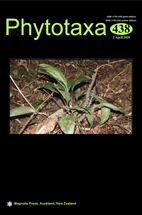Abstract
Alternaria section Panax currently includes seven species which are characterized by simple or branched and short to moderately long primary conidiophores as well as by solitary to short simple or branched chains of conidia with moderate to relatively long secondary conidiophores. Two species within the section have been reported to have sexual morphs. During the study of fungi on overwintered stems of Serratula coriacea Fisch. & C.A.Mey. (Asteraceae) from different regions of Urmia, West Azarbaijan Province, Iran, 26 isolates (16 from conidia and 10 from single ascospores) representing Alternaria characteristics were isolated and studied taxonomically. All the studied isolates formed sexual morph on PDA, PCA, V8–A, and HA media after 2 months incubation in the dark at 4 ºC and fully matured after 3 months. Based on morphological characteristics of sexual and asexual morphs and multiple gene sequences analyses (ITS-rDNA, GAPDH, RPB2 and TEF), the newly studied isolates represented a new species in Alternaria section Panax, which is described and illustrated here as Alternaria hedjaroudei. Alternaria hedjaroudei is phylogenetically close to A. avenicola, A. calycipyricola and A. photistica but it can be distinguished morphologically based on the formation of short chains of conidia (2–3 in a chain), absence of chlamydospores, smaller conidia size, relatively short secondary conidiophores, and fewer transverse septa in mature ascospores. Detailed morphological comparisons with other species in the section Panax are provided.

